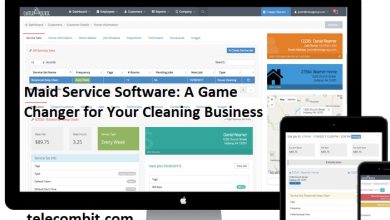My Country Mobile: Essential Guide for CC Routing Strategies
Introduction to CC Routes
In today’s fast-paced business landscape, efficient call routing plays a crucial role in optimizing the performance of call centers. Call centers, also known as contact centers, are the frontline of customer service for many organizations, handling a significant volume of incoming and outgoing communications.
These centers serve as the central hub where customer queries, complaints, and sales inquiries are addressed. To ensure smooth operations and seamless customer experiences, implementing effective CC routes is imperative.
Definition and Explanation
CC routes refer to the process through which incoming calls or contacts are directed to appropriate agents or departments within a call center. It involves establishing an intelligent system that efficiently handles call distribution, ensuring that callers are connected with the most suitable agents equipped to handle their specific needs or concerns.
The fundamental objective of CC routes is to streamline communication flows within a call center environment. By employing strategic routing strategies and leveraging modern technological advancements such as VOIP (Voice over Internet Protocol), call centers can optimize their operational efficiencies while enhancing customer satisfaction levels.
CC (Call Center) Routes – An Overview
In practice, CC routes encompass various methodologies and technologies aimed at managing incoming calls effectively. The process involves steering callers through different stages within the calling infrastructure until they reach an appropriate agent or department that can provide them with the required assistance. This routing may involve interactions with an Automatic Call Distributor (ACD) system or Interactive Voice Response (IVR) system before connecting callers with live agents.
ACD systems play a significant role in managing CC traffic by intelligently distributing calls among available agents based on predefined criteria such as agent skills, previous caller history, language preferences, or other relevant factors. On the other hand, IVR systems provide callers with voice prompts and menu options to direct them to the appropriate department or self-service options, minimizing the need for agent involvement in routine inquiries.
Importance of Efficient Call Routing in Call Centers
The significance of efficient call routing cannot be overstated when it comes to achieving operational excellence and delivering exceptional customer experiences. By implementing well-designed CC routes, call centers can experience numerous benefits:
Enhanced Customer Satisfaction
Efficient call routing ensures that customers are promptly connected with agents who have the necessary knowledge and skills to address their specific concerns. This leads to quicker problem resolution and higher customer satisfaction levels.
Optimized Agent Utilization
By intelligently distributing calls based on agent skills, availability, and workload, call centers can ensure that agents are effectively utilized. This prevents overburdening certain agents while others remain underutilized.
Reduced Call Abandonment Rates
With proper CC routes in place, callers experience shorter wait times and are less likely to abandon their calls. Reduced abandonment rates contribute positively to customer retention and overall contact center performance.
Better Resource Allocation
By accurately forecasting call traffic patterns and aligning agent staffing levels accordingly, call centers can optimize resource allocation. Consequently, they can minimize costs associated with idle time or understaffing during peak periods.
Actionable Analytics Insights
Effective CC routes allow for accurate measurement and analysis of key performance indicators (KPIs) such as average handling time, first-call resolution rates, or customer satisfaction scores. These insights enable data-driven decision-making for continuous improvement within the contact center ecosystem.
Understanding the importance of CC routes is essential for any organization seeking to maximize its call center’s performance. By implementing efficient routing strategies and leveraging appropriate technologies, call centers can enhance customer satisfaction, optimize resource allocation, and achieve operational excellence.
Understanding the Basics of CC Routing
Call Center Infrastructure and Components
In order to comprehend CC routing, it is crucial to familiarize oneself with the fundamental components of a call center infrastructure. One essential element is the Automatic Call Distributor (ACD).
This system serves as the central hub for incoming calls, intelligently routing them to available agents based on predefined criteria such as agent skills, availability, and customer priority. The ACD ensures efficient call handling and helps reduce customer wait times.
Another integral component is the Interactive Voice Response (IVR) system. This technology allows callers to interact with pre-recorded voice prompts and use touch-tone responses or voice recognition for self-service options before being connected to a live agent.
IVR systems play a vital role in enhancing customer experience by providing quick access to relevant information or automated tasks without engaging an agent unnecessarily. Queue Management Systems are also essential in CC routing.
These systems are responsible for managing incoming call queues, prioritizing calls based on predefined rules, and ensuring fair distribution among available agents. Queue management systems enable effective control over call traffic by monitoring waiting times, assigning priority levels, and providing real-time statistics related to caller waiting times.
Types of CC Routing Strategies
Skills-Based Routing
Skills-based routing is a popular strategy utilized in CC routes VOIP that aims to match caller needs with agent skills effectively. By using intelligent algorithms and predefined criteria such as language proficiency or technical expertise, incoming calls are directed towards agents who possess the necessary qualifications to address specific customer concerns efficiently.
The benefits of skills-based routing are manifold. Firstly, it ensures that customers receive accurate information from knowledgeable agents, leading to higher customer satisfaction rates.
Secondly, this approach optimizes efficiency by minimizing transfers between agents or departments since calls are initially routed directly to competent individuals. However, there are limitations to skills-based routing.
If agents with specific skills are engaged in lengthy calls, it can lead to longer wait times for customers with similar needs. Additionally, constant training and updating of agent skills are necessary to ensure compatibility with the routing system.
Time-Based Routing
Time-based routing is another significant CC routing strategy that focuses on optimizing agent availability based on factors such as time zones or shifts. By aligning call distribution with agent working hours, this approach ensures that customers receive timely assistance from available representatives. One advantage of time-based routing is its ability to balance workload and improve efficiency within a call center.
It prevents agents from being overwhelmed during peak hours while maintaining a consistent level of customer service throughout the day. Additionally, this strategy enables international call centers to accommodate customers across different time zones effectively.
To implement time-based routing successfully, call centers need accurate information about their agents’ schedules and availability. Coordination between various departments and effective communication channels are crucial for seamless implementation and maintaining optimal customer support.
Understanding the basics of CC routing is paramount in optimizing call center operations. Call center infrastructure components such as ACDs, IVR systems, and Queue Management Systems form the backbone of efficient CC routes VOIP.
Skills-based routing matches caller needs with agent expertise, enhancing customer satisfaction while ensuring efficient utilization of resources. Time-based routing optimizes agent availability based on shifts or time zones to balance workload and provide consistent service levels throughout the day.
Advanced CC Routing Techniques and Technologies
Intelligent Routing Algorithms
Intelligent routing algorithms are a boon to call center efficiency. One such technology is predictive dialing systems, which leverage the power of predictive analytics to anticipate agent availability and reduce idle time. By analyzing historical data, call center managers can accurately predict peak call volumes and distribute resources accordingly.
This enables them to schedule agents optimally, resulting in reduced wait times for customers while simultaneously maximizing agent productivity. Predictive dialing systems ensure that agents are engaged in meaningful interactions rather than sitting idle, leading to improved customer satisfaction and increased operational efficiency.
Another aspect of intelligent routing algorithms is geographic routing. By utilizing caller location data, call centers can assign calls to the most suitable agents based on geographical proximity or language skills.
This approach not only enhances customer experience by providing localized service but also reduces communication barriers caused by language differences or cultural nuances. By connecting callers with agents who understand their specific needs better, geographic routing ensures a personalized and efficient support experience.
Omni-Channel Routing Solutions
In today’s fast-paced digital landscape, customers seek seamless support across multiple communication channels such as voice, email, chat, and social media. Omni-channel routing solutions enable call centers to integrate these diverse channels into a unified platform for efficient customer support management. By adopting an omni-channel approach, call centers can provide consistent service across various touchpoints while maintaining context and history for each customer interaction.
The benefits of omni-channel routing in modern contact centers are manifold. Firstly, it allows customers the flexibility to choose their preferred mode of communication without sacrificing quality or convenience.
Secondly, it empowers agents with a holistic view of customer interactions across different channels, enabling them to deliver personalized responses tailored to each customer’s unique needs. Furthermore, omni-channel routing facilitates quicker issue resolution by eliminating the need for customers to repeat information when switching between channels.
However, implementing omni-channel routing comes with its own set of challenges and considerations. It requires a robust technological infrastructure capable of seamless integration and data synchronization across various channels.
Additionally, call centers must invest in comprehensive training programs to equip agents with the necessary skills to handle diverse communication channels effectively. Overcoming these challenges is essential to reap the rewards of improved customer satisfaction, higher agent productivity, and increased brand loyalty that come with successful implementation of omni-channel routing solutions.
Niche Subtopics in CC Routes
When it comes to CC routes, there are niche subtopics worth exploring, such as overflow routing strategies. Overflow routing refers to the process of managing excess call traffic when call volumes exceed available agent capacity. One type of overflow strategy is priority-based overflow, which ensures that high-priority calls receive immediate attention by bypassing regular queues and directly connecting them with specialized agents or supervisors.
This approach is particularly useful for urgent or critical issues that require prompt resolution. Another type of overflow strategy is load-balanced overflow, which distributes excess call traffic evenly across available agents based on their workload.
This technique helps prevent bottlenecks by ensuring workload distribution in a fair and systematic manner. By evenly distributing calls during peak periods, load-balanced overflow optimizes agent utilization while maintaining service levels and reducing caller wait times.
This section on advanced CC routing techniques and technologies: intelligent routing algorithms leverage predictive dialing systems and geographic routing for efficient call assignment and enhanced customer experience. Omni-channel routing solutions integrate multiple communication channels for seamless customer support management across various touchpoints.
Additionally, niche subtopics like overflow routing strategies further refine the efficiency of CC routes by handling excess call traffic effectively. Overall, these advanced techniques empower call centers to optimize their operations while delivering exceptional customer service in an ever-evolving digital landscape dominated by multi-channel interactions.
Conclusion
Efficient call routing is critical for call centers to deliver exceptional customer experiences while optimizing operational performance. As highlighted in this article, CC routes encompass the technologies, strategies, and processes aimed at streamlining call distribution and enhancing resource utilization within contact centers. By leveraging solutions like ACD systems, IVR technology, and advanced techniques such as predictive dialing, skills-based routing, and omni-channel integration, call centers can route each customer to the right agent at the right time. This enables quicker issue resolution, reduced wait times, and higher satisfaction levels. For call centers to stay competitive and maximize productivity in a rapidly evolving landscape, investing in robust, intelligent CC routing capabilities is no longer optional – it is an imperative. With insightful management and continuous innovation, CC routes will continue empowering contact centers to achieve service excellence.





